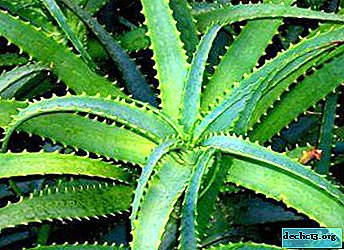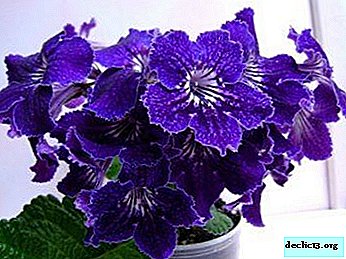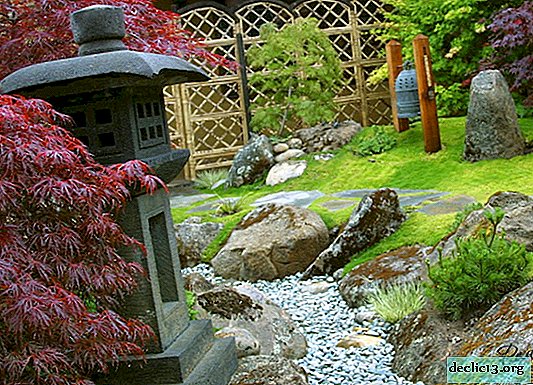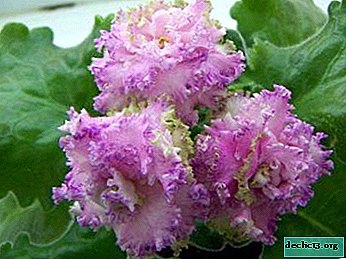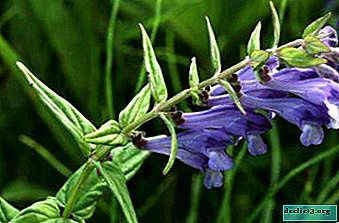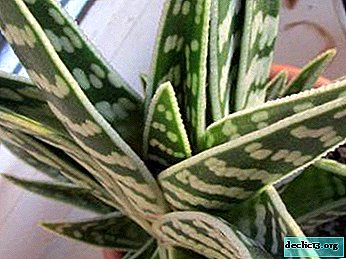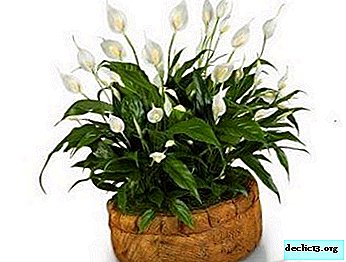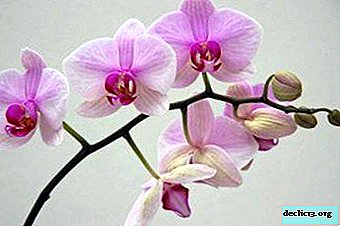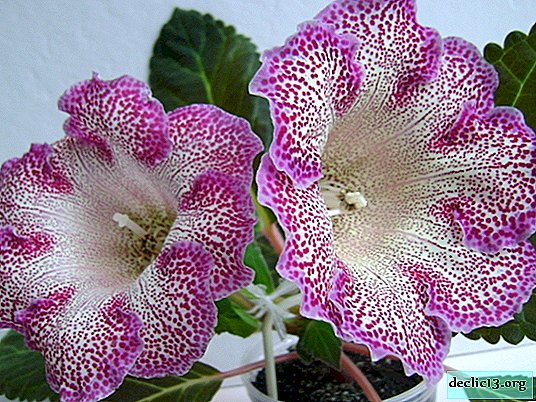What is a Kalanchoe mix and how to care for it?
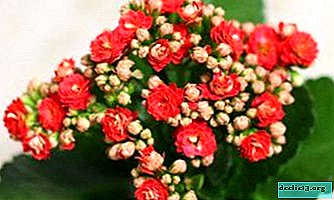
Kalanchoe mix - this sunny flower came to us from Madagascar. Very healing flower, very plentiful and brightly blooms, will decorate any house.
There are many varieties of colors. Kalanchoe blooms in red, pink, white, orange, yellow - a real sunny, bright gift for connoisseurs of exotic flowers. Read more about this amazing flower and the proper care of it in our article.
Botanical Description and History
Kalanchoe Mix belongs to the genus Succulents of the large family Crassulaceae. His homeland is the tropics of southeast Asia, southern Africa, and South America. Scientists have more than 200 species of this tropical little miracle. Many types of Kalanchoe are well adapted to our housing conditions (you can find out about a variety of Kalanchoe in colors in this article).
A distinctive feature of Kalanchoe is the well-being and prosperity in any climate. The flower, due to its properties, stores water well. Kalanchoe Mix is a bred hybrid from Kalanchoe Kandiva mini, which in nature lives in hot Africa and Asia.
Thanks to the talent and patience of the breeders, the mix “inherited” good stamina. But, unlike its ancestors, it blooms longer: flowering can last up to 5-6 months.
Other names
In the homeland, Kalanchoe is called a plant of life. And in the literal translation from the Portuguese language, Kalanchoe - "grass of fate." In addition to the healing properties, Kalanchoe also has magical properties - fortunetellers predicted fate by the number of "children" who grew up, hence the name.
Varieties, their features and photos
There are a lot of varieties of Kalanchoe Mixes, for every taste and preference. But there are special varieties that many flower growers love and breed.
Rosalina Don Sergio
 It has the appearance of a bush, the stems are short, the flower grows only up to 20 - 25 cm. The leaves are fleshy, bright, dark green, egg-shaped. The edges are patterned.
It has the appearance of a bush, the stems are short, the flower grows only up to 20 - 25 cm. The leaves are fleshy, bright, dark green, egg-shaped. The edges are patterned.
The flowers are unusually bright - orange, miniature. They grow in diameter up to 1 cm. On a small peduncle, flowers are collected in dense bouquets - umbrellas. It blooms for a long time - 1.5 - 2 months, new buds ripen for it - flowering continues, and the Kalanchoe Rosalina mix Don Sergio continues flowering for a long time.
More information about Kalanchoe Don Sergio and about caring for him can be found here.
Tubular
 This species is called both herringbone and snowflake because of the bizarre shape of the flowers, they seem to be tied in a pattern. The stems are bare, juicy, light green, covered with a scattering of green spots, dashes and dots. The leaves are light, mottled with brown - green spots - marks. They are slightly folded into small tubes with a groove in the center. The leaves are narrow, grow up to 0.5 cm wide to 10 - 12 cm.
This species is called both herringbone and snowflake because of the bizarre shape of the flowers, they seem to be tied in a pattern. The stems are bare, juicy, light green, covered with a scattering of green spots, dashes and dots. The leaves are light, mottled with brown - green spots - marks. They are slightly folded into small tubes with a groove in the center. The leaves are narrow, grow up to 0.5 cm wide to 10 - 12 cm.
The flowers are lilac, miniature, only 2 cm. It blooms mainly in winter - hence the name - Snowflake.
From the biological description of Kalanchoe Mix and the characteristics of its varieties Several features of this wonderful flower should be highlighted:
- Kalanchoe Mix is very easy to propagate, this allows you to breed a flower unhindered even by unprofessional flower growers.
- Kalanchoe Mix survives and feels great with drought. Reason: a thick stem and leaves accumulate, as in tanks, water supplies. Therefore, the flower has such a fragrant appearance.
- Kalanchoe Mix is popularly called a "surgeon", the juice from the leaves, in fact, "draws out" any inflammation without surgery. Kalanchoe tincture treats varicose veins, edema, even colds and flu.
- Kalanchoe Mix is used in cooking and home cosmetology - leaves with "children" - a useful base for salads, face masks.
Where and how to plant: rules and instructions
Young Kalanchoe Mix is transplanted once a year:
- We process the pot for disease prevention.
- At the bottom of a small pot we place drainage - pebbles, pieces of chopped cork, 2-3 cm.
- Lightly, without tamping, pour moist soil.
- We deepen by the level of the neck, the depression is small.
- Fertilize the soil.
An adult flower is transplanted every 3 to 4 years:
- Use the transshipment method.
- A pot is required larger than the previous one.
- At the bottom we pour a drainage base - expanded clay.
- We place a shallow root with an old earthen lump.
- We fill the space of the pot with new soil.
- We make fertilizers.
Adaptation to new conditions of life lasts 1 - 2 weeks.
Lighting and location
 Lighting should be adequate, close to the natural conditions of life. The eastern and western windows are best suited - and the sun is enough, and there is no risk of burning the leaves. If you installed pots on the south windowsill, be sure to shade the window, curtain it.
Lighting should be adequate, close to the natural conditions of life. The eastern and western windows are best suited - and the sun is enough, and there is no risk of burning the leaves. If you installed pots on the south windowsill, be sure to shade the window, curtain it.
In winter, it is better to add additional lighting to increase daylight hours to 10 - 11 hours. Otherwise, Kalanchoe Mix will stretch, even with limited watering. Such a short daylight contributes to flowering in winter - December - February.
But in the summer, in the very heat, for several hours, you must definitely make a partial shade for colanchoe. The room should be cool enough even in summer. Make sure that the temperature does not rise above 27 ° C. In winter, the permissible temperature limits are: 11 - 15 ° C.
In winter, it’s best to install the pots away from radiators, Kalanchoe Mix does not tolerate intense warm streams.
Soil requirements
We must not forget that Kalanchoe Mix is a tropical resident, so the composition of the soil should correspond to its natural features.
- Drainage, at least 2 - 3 cm.
- Sheet earth.
- Sand.
- Turf.
- Humus.
- 1: 1: 1: 1 - the ratio of parts of the composition of the soil.
It is important to consider that Kalanchoe Mix does not like big pots, flowers feel more comfortable in small pots.
How to care?
Abundant flowering and a healthy, fragrant appearance of Kalanchoe Mix depend on proper care at home.
- Watering should be moderate no need to fill the flower. This leads to disease and decay. At normal temperature, it is enough to water once every 10 to 12 days. In the summer, you can more often.
Attention: water only when the soil is dry. From the pallet you need to drain the water so that the plant does not get sick. Water should not fall on the stem and leaves.
If the leaves are sluggish, drooping, it means that Kalanchoe receives too much moisture, reduce watering immediately.
During flowering, water a little and often - every 3 days. In summer and spring, watered with cool water, and in winter it is better to water with warm.
- Humidification is not necessary. Exotic flower like dry air. Spraying it, especially in winter, is not advisable. Every 2 weeks, wipe the leaves of Kalanchoe Mix, he loves freshness and cleanliness. If it is very hot, place the pot on a pallet with wet peat - this will slightly refresh the flower.
 Fertilizer combined with irrigation for uniform ingress of nutrients into the soil. Top dressing should be special for the flowers of this species, they also use fertilizers for cacti. Fertilizer is used only during the growth and flowering of Kalanchoe Mix.
Fertilizer combined with irrigation for uniform ingress of nutrients into the soil. Top dressing should be special for the flowers of this species, they also use fertilizers for cacti. Fertilizer is used only during the growth and flowering of Kalanchoe Mix.- For good flowering it is recommended to pinch off extra shoots and remove old peduncles. The procedure is repeated when 3 pairs of leaflets are formed on young shoots. The flower turns into a decorative, well-groomed bush. We attach the last time, when the flowering begins. Using this method, our Mix can bloom 2 times a year.
To induce flowering colanchoe Mix arrange "dark" - the flower is covered with dark matter and put in a dark place. Do not water at the same time for 2 weeks. Then they put the pot in its original place, feed it with fertilizers, making up for natural losses. This stimulates fast flowering.
Common Diseases and Pests
If Kalanchoe Mix does not bloom for a long time, spots appear on the leaves, which means there are problems: mold, insects or fungal infections. The main reason is improper care.
The most common problems of Kalanchoe Mix:
- Late blight. This is rot. Signs: disgusting brown spots, plaque appear on the leaves. The reason is poor ventilation, excess moisture in the substrate. Urgently treat the leaves with fungicides, pick up fertilizers, be sure to reduce watering.
- Powdery mildew - white spots and plaque on the leaves. This is a fungus caused by overheating of the air. Therefore kolanchoe Mix discards the leaves. It is necessary to water the flower more often, to make the air temperature cool. Spraying with fungicides will help here. You need to hurry, as this disease spreads very quickly, it can infect other flowers.
- Gray rot - the leaves became sticky, covered with a gray coating. Urgently need to transplant Kolanchoe Mix, change the soil, sanitize pots and tools for transplantation. Adjust watering, temperature and humidity, treat the flower with an antifungal solution.
- Mealybug - the most dangerous pest for our flower. It feeds on juice, causes fatal black mold, is very dangerous. White discharge appears on the stems and leaves. Treatment: spraying with mineral oil, clean the Kalanchoe Mix from diseased leaflets.
Propagation Features
The main feature of Kalanchoe Mix is simple reproduction. Any grower can handle this. Propagated vegetatively - leaves, cuttings, stems.
Reference! Even old, fallen leaves are suitable for propagation. They are very easily rooted in the soil.Leaves and stems
 Put any leaf in water or better in wet sand.
Put any leaf in water or better in wet sand.- Cover with a glass or a transparent jar.
- The stalk can also be put in water.
- As soon as a leaf or stem has sprouted roots, you can plant.
- Sometimes a leaf plate is immediately planted in a pot with a substrate and covered with a glass.
- Young shoots develop very quickly.
- 2 plants are usually planted in one pot. For insurance.
Cuttings
- We propagate during the formation of the bush or during transplantation.
- Strong shoots up to 7 cm are selected.
- Better to use the tops of the shoots.
- Cut cuttings are planted in a moist substrate.
- Cuttings take root in 2 weeks.
Kalanchoe Mix is such a festive, elegant flower. In order for him to please you and decorate your house, a minimum of effort is required, because he is not so whimsical and hardy! Observe the flower, keep it in order, adhering to all the simple recommendations for care, and this exotic flower will always show off on your window!

 Fertilizer combined with irrigation for uniform ingress of nutrients into the soil. Top dressing should be special for the flowers of this species, they also use fertilizers for cacti. Fertilizer is used only during the growth and flowering of Kalanchoe Mix.
Fertilizer combined with irrigation for uniform ingress of nutrients into the soil. Top dressing should be special for the flowers of this species, they also use fertilizers for cacti. Fertilizer is used only during the growth and flowering of Kalanchoe Mix. Put any leaf in water or better in wet sand.
Put any leaf in water or better in wet sand.
